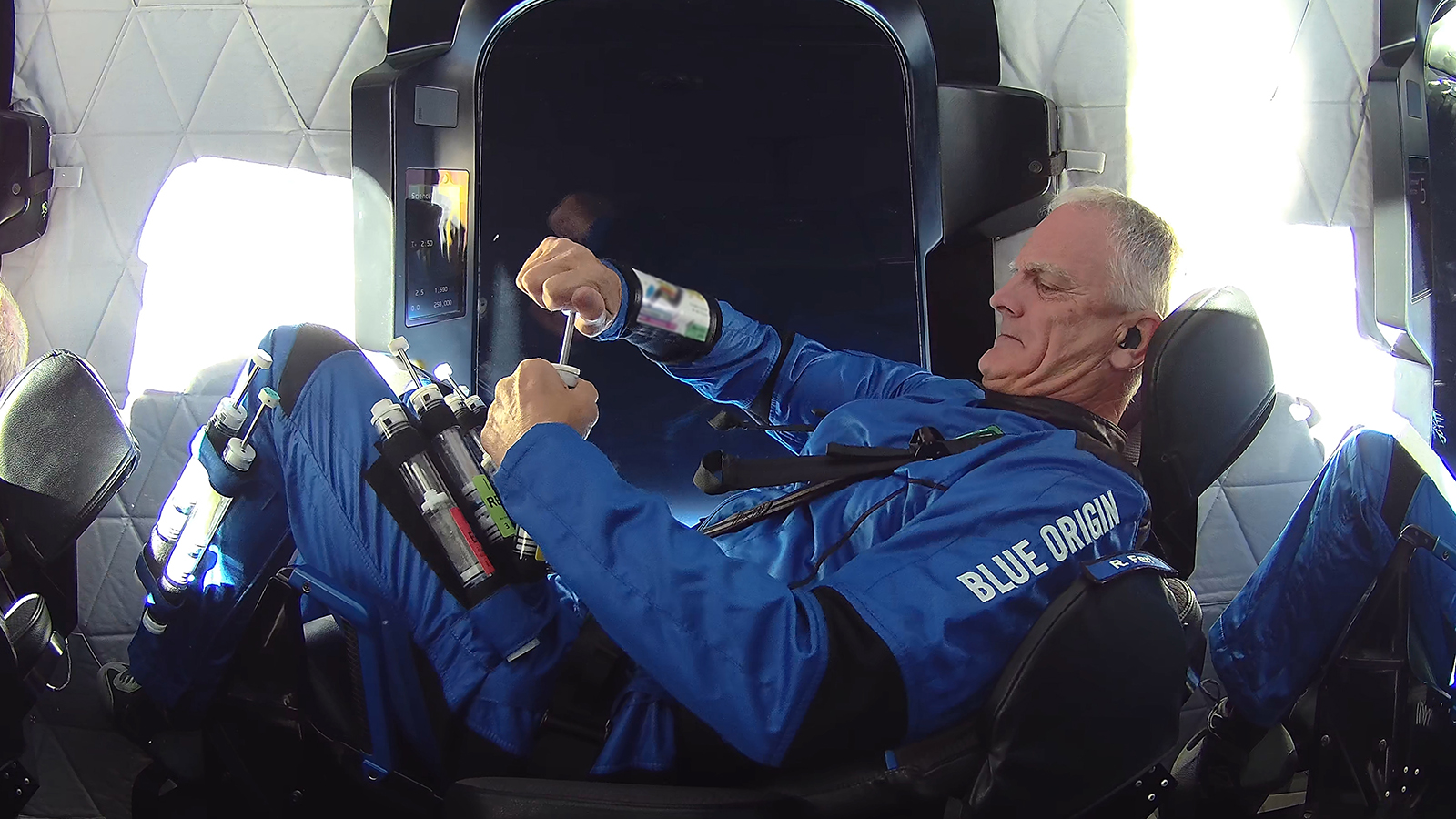Stay Up to Date
Submit your email address to receive the latest industry and Aerospace America news.
The Microgravity and Space Processes Technical Committee encourages the advancement and public awareness of low-gravity studies in physics, materials, biological sciences and related fields.
Many of this year’s achievements and activities were dictated by the priorities laid out in the National Academies’ latest decadal survey on biological and physical space sciences, published in September 2023. Guided by those recommendations, the low-gravity space processes community continued working toward a future where humans thrive in space.
In August, Rob Ferl of the University of Florida became the first NASA-funded academic researcher to personally conduct his own experiments in microgravity. Sponsored by the NASA Flight Opportunities Program, Ferl was among the six-person crew of Blue Origin’s NS-26 mission. Upon reaching an altitude of 105 kilometers in the New Shepard capsule, Ferl opened test tubes with plant samples attached to his suit to analyze how biology is impacted by changes in gravity. In June, under the same NASA program, a next-generation microgravity 3D printer developed by researchers at the University of California, Berkeley was flown onboard Virgin Galactic’s VSS Unity spaceplane. Also during this flight, Galactic 07, a rotational slosh experiment from the University of Purdue was conducted to analyze the rate of damping of propellant motion after a rotational spacecraft maneuver. NASA also continued flying experiments aboard parabolic aircraft, conducting 57 tests aboard Florida-based Zero Gravity Corp.’s Boeing 727 between January and August.
In June, some 100 institutions from 25-plus countries worked together to coordinate the publication of the Space Omics and Medical Atlas. This package of manuscripts, data, protocols and code is the largest-ever compendium of data for aerospace medicine and aerospace biology. It represents a tenfold increase in publicly available human space omics data, a fourfold increase in the number of single cells processed from spaceflight, the launch of the first aerospace medicine biobank, the first-ever direct RNA sequencing data from astronauts, the largest number of processed biological samples from a mission and the first-ever spatially resolved human transcriptome data.
Between January and June, the ISS National Laboratory sponsored and delivered to the International Space Station some 100 payloads on fundamental science, technology development, in-space manufacturing and STEM education investigations. These spanned NASA-funded missions, as well as private astronaut flights through Axiom Space of Texas.
August marked the 10-year anniversary of the European Space Agency’s electromagnetic levitator, a facility that hosted three U.S. investigations this year — from Tufts University in Massachusetts, Washington University in St. Louis and Worcester Polytechnic Institute in Massachusetts — all of them sponsored by NASA’s Division of Biological and Physical Sciences. One of the Washington University researchers studied the structure and physics of metallic liquids and glasses to develop new theories on glass formation.
In July, the ISS National Lab and NASA’s Division of Biological and Physical Sciences announced the five recipients of the inaugural Igniting Innovation solicitation to conduct cancer research on the ISS. The winners will receive a combined $7 million to fund multiple experiments on the ISS.
With the ISS scheduled to be deorbited in early 2031, NASA continued to support the development of commercial low-Earth orbit destinations. In January, NASA added $99.5 million in funding to its existing Space Act Agreements with Blue Origin and Voyager Space, who are each developing private space stations. In October, California-based Vast revealed the final design of Haven-1, the first of its planned orbital research and manufacturing space stations, with its partners Redwire and Yuri. The laboratory is scheduled to launch with a privately funded crew of four no earlier than the second half of 2025.
Contributors: Kenneth Lui and Antoni Perez-Poch
Stay Up to Date
Submit your email address to receive the latest industry and Aerospace America news.




